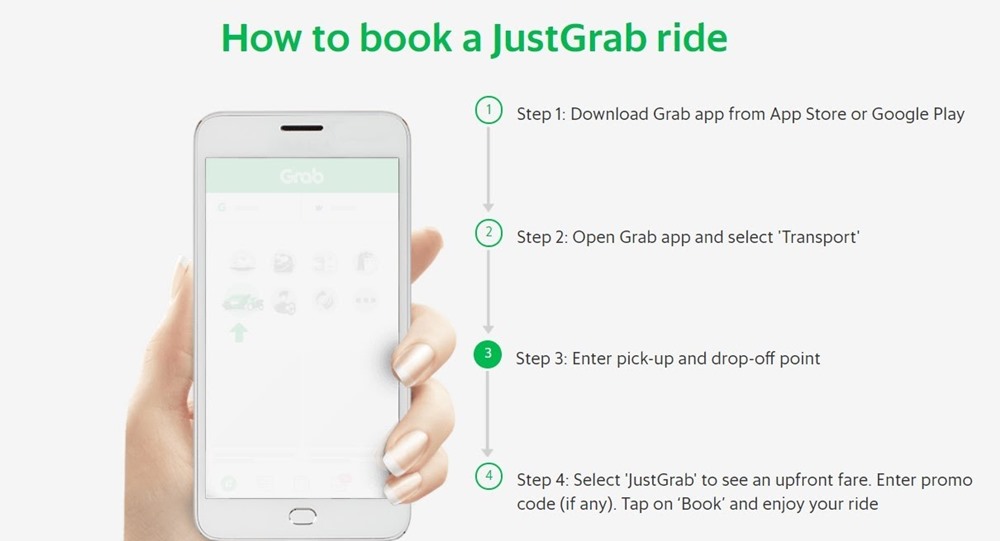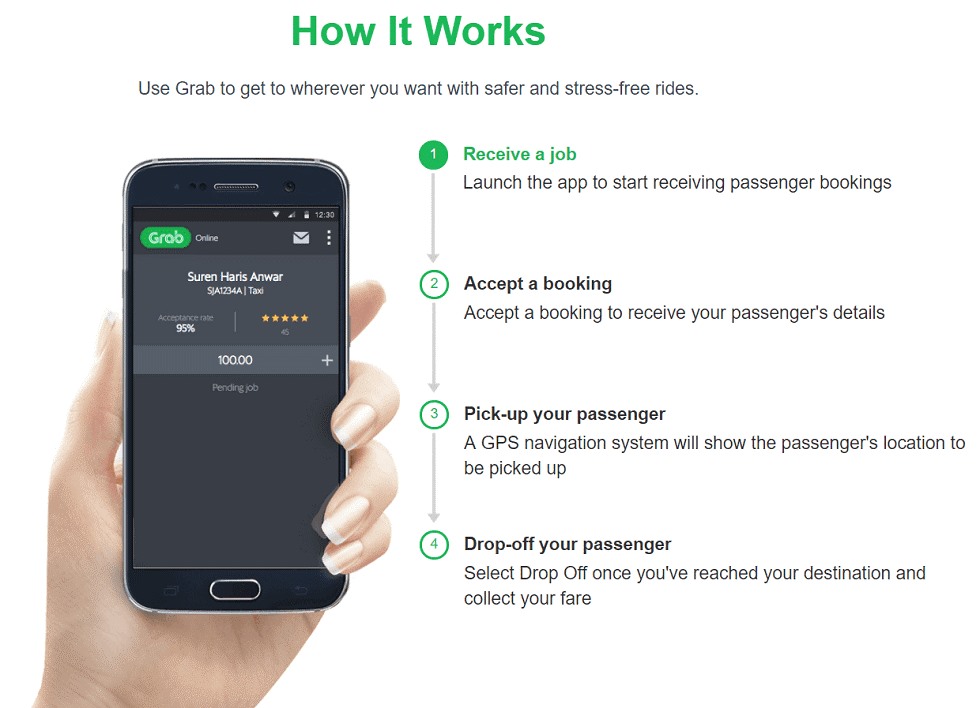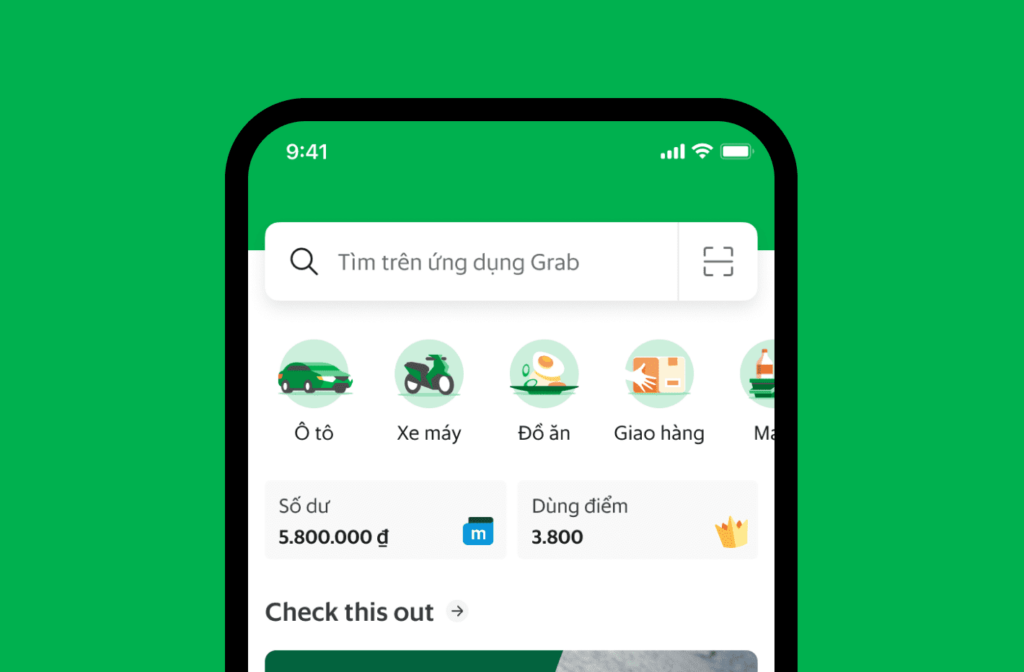Design Thinking @ Grab Vietnam: How Grab Bike dominates the Vietnamese ride-hailing market
I. Context
Grab started as a tech unicorn in 2012 in Malaysia, specializing in ride-hailing service. With extensive and efficient use of market research and innovation, it has now expanded its operation to a variety of businesses, establishing itself as a super app in Vietnam. In 2014, they joined the market in Vietnam and were competing against several similar providers, most notably Uber. But what made Grab (Bike) so superior, that they quickly kicked Uber out of the market just 4 years later?
Southeast Asian countries have always been famous for the extensive use of motorbikes in their daily life. Vietnam is no different, with every household owning at least one motorbike, which is used regularly to go to work, to the supermarket or for a ride in general. In fact, it is so popular that services are offered by this means of transportation, most notably “motor-taxi”. These drivers don’t just transport people but also deliver and ship goods in general.
II. Challenge
These “traditional taxis” can be seen regularly in crowded intersections or central bus stations, as this was their most realistic way to get customers. Therefore, a lot of these drivers may not get a single customer in a whole working day. When someone wants to book them, the price will be negotiated on the go, based on the distance and personal preference. Some people will often get the telephone number of drivers they consider reliable and call them when needed, as this gives them more insurance when they need to go somewhere or get something delivered.
However, this whole ride-hailing custom has a lot of problems and flaws, which can be summarized below after extensive surveys and first-hand experience.
For customers, they are reluctant to use this service due to a few main reasons:
- Untransparent price, fear of rip-off, unwilling to negotiate price.
- Safety issue
- Hard to find drivers all the time.
For drivers, they are also facing various issues, albeit not entirely the same as customers:
- Lack of customers
- Fierce competition with fellow drivers in the area
- Safety issue
- Payment issue (not being paid at the end of the trip)
Besides, this traditional ride-hailing system often creates chaos and disorder in public places when conflict (and sometimes violence) occurs among drivers and between drivers and customers.
III. Development phase
Grab was quick to realize, this is the chance they can capitalize on to step in the market in 2014.
An app was designed for customers to book rides, and for drivers to take those rides. This addresses the main issue of both drivers and customers when practicing this unique service. The app lets the customer choose their pick-up point and their destination, based on that a price will be calculated and informed with the customer. Once confirmed, the ride will be shared to all drivers in the near vicinity, who can choose to accept the ride. The steps of this process are very simple and can be simplified with two images.


This helps with the most notable concern, transparency of price, both for customers and drivers. Conflicts between drivers also disappear as the rides are offered on the basis of first come, first serve. Safety level is also raised thanks to the obligatory identity verification for both customers and drivers. Both parties now have a higher chance of finding a suitable provider/buyer of the service. You can also rate your driver/rider after the ride, which helps to identify suspicious or poor-behaved individuals.
Grab was also quick to add GrabExpress as their next step, utilizing fully the mobility and versatility of motorbikes. This was a genius move to attract more drivers, as most of them will also apply to deliver goods, which further helps them earn their living.
One of the main reasons that allow Grab to win the race vs its competitor is its quick adaptability in payment method. Back in the 2010s, card payment in SEA was not popular and it was not easy for users to set this up, drivers and riders alike. Cash payment was dominant, and Grab was one of the first providers to also allow customers and workers to pay and receive cash after each ride. Later, it developed its own payment method with GrabPay and cooperated with the giant Vietnamese fintech firm Moca to launch a digital wallet which is widely used by the youth.
Besides the usual ride-booking experience, Grab knew how to focus their design on relevance and inclusivity. They start with building empathy for the needs of customers and transform it to design applications.
- Connectivity
Public Wi-Fi is popular, but its connection is unstable, therefore mobile data is generally preferred in public. In case of lost connectivity, the experience of the user should be kept alive through intuitive visual cues, messaging, and cached content.
- Device type and condition
A lot of the time, customers and drivers have old or hand-me-down phones that either have small screens or run obsolete operating systems. Fancy transitions can look great on high-end devices but can appear laggy or delayed on below average phones. Aim for simple animations to offer a more seamless experience. For Grab’s driver-partners who may have their devices mounted to the dashboard, tap targets need to be larger and more explicit.
- Ease of use
The interface of the app was also designed for simplicity and ease of use. A lot of Grab drivers, formerly traditional drivers, don’t have a high education level, therefore, it is crucial that all the steps are easily accessible.
- Mobile-only
In Southeast Asia, mobile numbers are more synonymous with a method of registration over an email address. In the region, people rely heavily on social media and chat apps to communicate and broadcast news. Customers who sign up for a new Grab account, prefer phone numbers and OTP (one-time-password) registration over providing an email address and password. And anecdotally from interviews conducted at Grab, consumers didn’t feel the need for email when communication can take place via SMS or other messaging apps. With this information, when onboarding new consumers, Grab offers a relevant sign-in method for a mobile-only consumer, like phone number and social account registration. Grab’s passenger sign-up experience addresses these priorities with phone number first, social accounts second.
IV. Result
For Vietnamese people, GrabBike offers an innovative, adaptive way to modernize a long-lasting traditional service. Customers now feel safe and confident to book a ride whenever they want, with prices they agree to and verified drivers.
Moreover, it provides an insane number of jobs for people all over the places. With its accessible design, it was quick for Grab to attract traditional drivers to work for them, currently providing jobs for around 200.000 drivers.
For Grab, it was their firm foothold to step into the potential Vietnamese market. They are currently the monopoly power in providing various services such as GrabBike, GrabTaxi, GrabExpress, GrabMart and the most popular sector in recent years, GrabFood. According to a survey, GrabBike is used by 69% of the riders in Vietnam.
Grab also took over all Uber’s assets and operations in Cambodia, Indonesia, Malaysia, Myanmar, the Philippines, Singapore, Thailand, and Vietnam in 2018, cementing its reputation as the sole giant in the 3-billion-dollar market.

V. Lessons learned.
- Build empathy with the customers to fully understand their needs, and implement corresponding ideas into the design and usage of the app.
- One of the key factors of Grab is user safety. Also, it puts a lot of effort into ensuring the quality of the services provided. They partner only with professionals to offer the services listed on their platform.
- Learn and adapt from previous mistakes (also from your competitors) to improve reachability and convenience.
- Research traditional and conventional ways of living to provide much needed, related service with easy access and usage.



